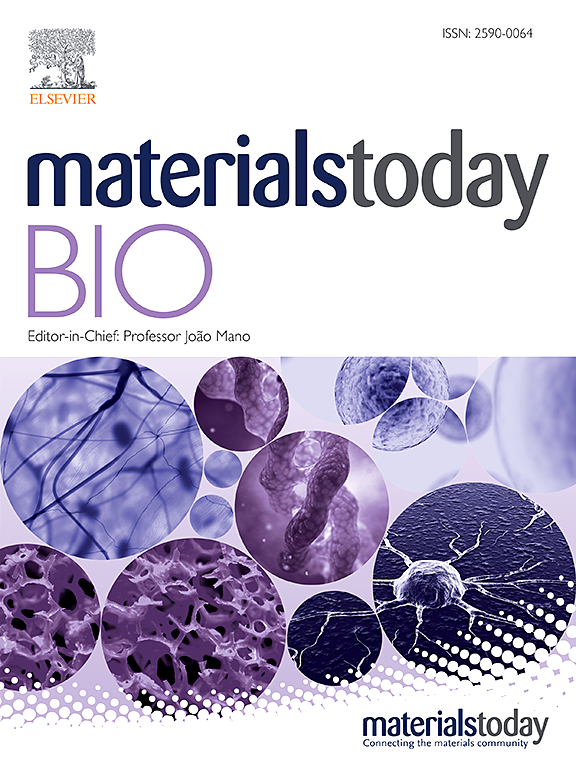Functionalized biomimetic nanoparticles loaded with salvianolic acid B for synergistic targeted triple-negative breast cancer treatment
IF 8.7
1区 医学
Q1 ENGINEERING, BIOMEDICAL
引用次数: 0
Abstract
The therapeutic effect of immune checkpoint inhibitors (ICIs) in triple-negative breast cancer (TNBC) is unsatisfactory. The immune "cold" microenvironment caused by tumor-associated fibroblasts (TAFs) has an adverse effect on the antitumor response. Therefore, in this study, mixed cell membrane-coated porous magnetic nanoparticles (PMNPs) were constructed to deliver salvianolic acid B (SAB) to induce an antitumor immune response, facilitating the transition from a "cold" to a "hot" tumor and ultimately enhancing the therapeutic efficacy of immune checkpoint inhibitors. PMNP-SAB, which is based on a mixed coating of red blood cell membrane and TAF membrane (named PMNP-SAB@RTM), can simultaneously achieve the dual effects of "immune escape" and "homologous targeting". Under the influence of an external magnetic field (MF), SAB can be targeted and concentrated at the tumor site. The SAB released in tumors can effectively inhibit the production of extracellular matrix (ECM) by TAFs, promote T-cell infiltration, and induce antitumor immune responses. Ultimately, the combination of PMNP-SAB@RTM and BMS-1 (PD-1/PD-L1 inhibitor 1) effectively inhibited tumor growth. Finally, this study presents a precise and effective new strategy for TNBC immunotherapy on the basis of the differentiation of "cold" and "hot" microenvironments.

负载丹酚酸 B 的功能化仿生纳米粒子用于三阴性乳腺癌的协同靶向治疗。
本文章由计算机程序翻译,如有差异,请以英文原文为准。
求助全文
约1分钟内获得全文
求助全文
来源期刊

Materials Today Bio
Multiple-
CiteScore
8.30
自引率
4.90%
发文量
303
审稿时长
30 days
期刊介绍:
Materials Today Bio is a multidisciplinary journal that specializes in the intersection between biology and materials science, chemistry, physics, engineering, and medicine. It covers various aspects such as the design and assembly of new structures, their interaction with biological systems, functionalization, bioimaging, therapies, and diagnostics in healthcare. The journal aims to showcase the most significant advancements and discoveries in this field. As part of the Materials Today family, Materials Today Bio provides rigorous peer review, quick decision-making, and high visibility for authors. It is indexed in Scopus, PubMed Central, Emerging Sources, Citation Index (ESCI), and Directory of Open Access Journals (DOAJ).
 求助内容:
求助内容: 应助结果提醒方式:
应助结果提醒方式:


